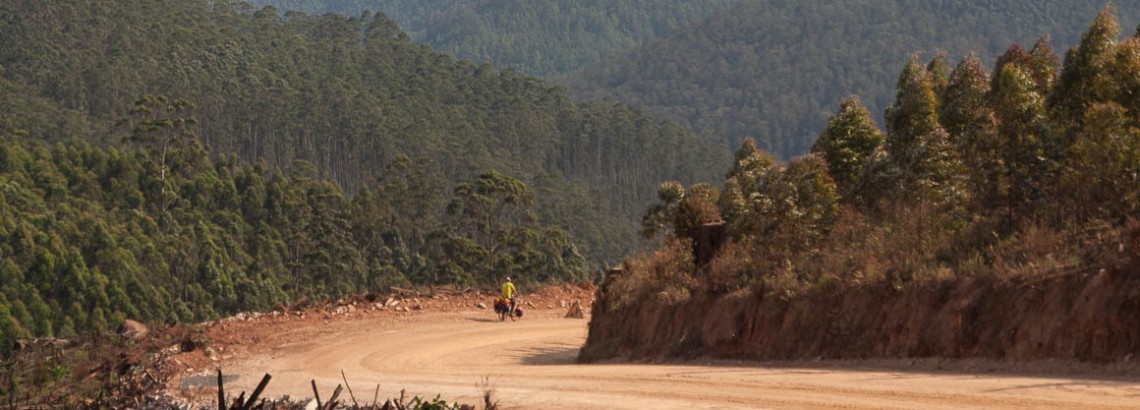All the information on these pages is based on our personal experiences while cycling through Swaziland in October 2013. Our visit to Swaziland was part of a longer bike trip through South Africa.
We flew into Johannesburg and arranged transport to Ermelo. From Ermelo we cycled to Amsterdam and into Swaziland. We entered Swaziland at the border post of Sandlane. The extremely hilly road tot Bhunya was almost deserted. From Bhunya we cycled down into the Malkerns and Ezulwine Valleys on a very hot day. We visited Mlilwane Wildlife Sanctuary and took a shortcut from Mbabane to Maguga Dam. Cycling the unpaved roads in the interior without any traffic was a great experience. So was the unpaved road from Piggs Peak to Bulembu. We left Swaziland at Bulembu and continued North to Nelspruit and towards the Blyde River Area.
These pages contain specific background on cycling in Swaziland.
“Is it safe to cycle in Swaziland?”
Some safety precautions may apply to surrounding South Africa but Swaziland is a different country. As Swaziland has never suffered from apartheid the Swazi people are open and will approach foreigners without hesitating.
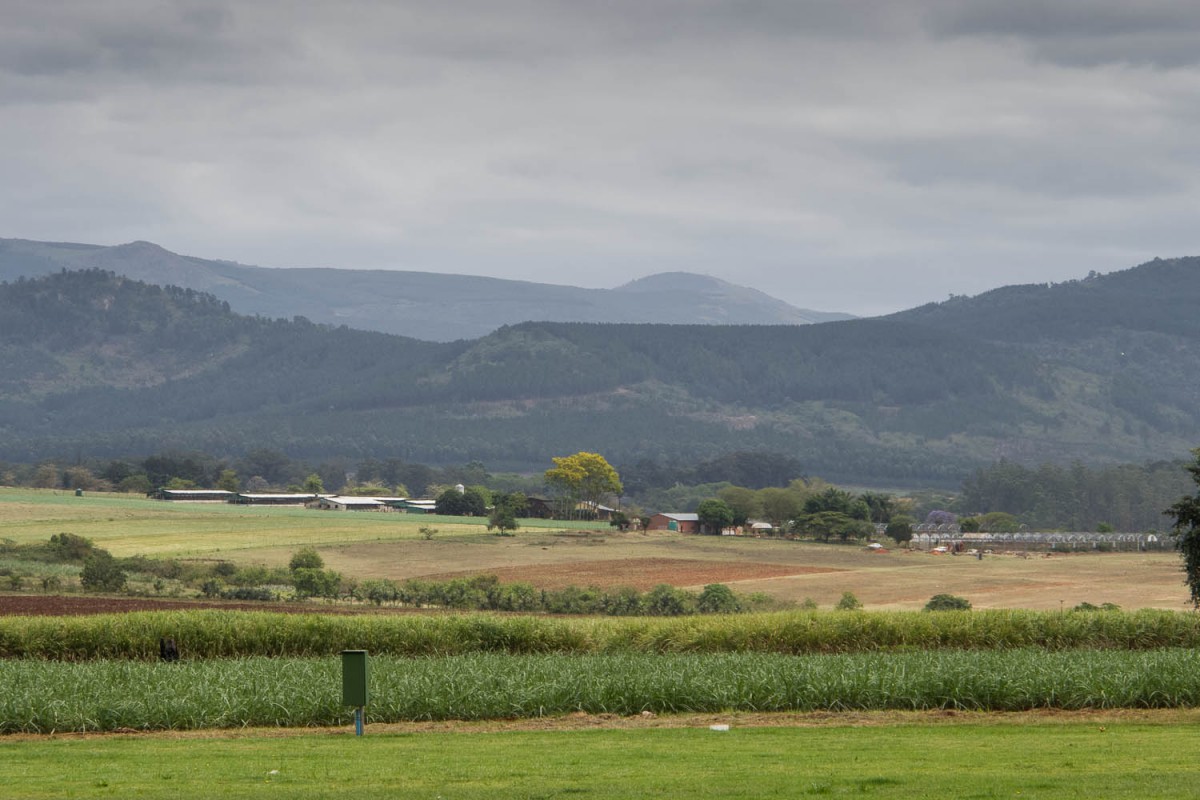
View of the Ezulwini valley
Maps; getting around
You won’t get lost in the Swazi highlands, as there are not many roads. We used the maps we carried for the South African part of the trip.
Very enjoyable was the shortcut from Mbabane to Maguga Dam. Kieren Vincent, son of the owners of Bhuleni Chalets we stayed at at Ezulwini, and a cyclist himself, showed us this route.
Books
We used the well known Lonely Planet travel guide and bought online the chapters we needed.
Swaziland on the WWW
- for general tourist information on Swaziland
Roads and Traffic
See our South Africa – Swaziland tour report for details about road conditions.
Main roads are paved and often busy. The minor roads are unpaved en the road conditions change regularly. On the unpaved roads there is hardly any traffic. Wide tyres with good grip are recommended. A mountain bike is a good idea but not essential. There are no flat roads in this part of the country. You either go up (steep) or down (steep). We often had to walk many kms to reach the next top. 50 km is probably as far as you can get in a day.
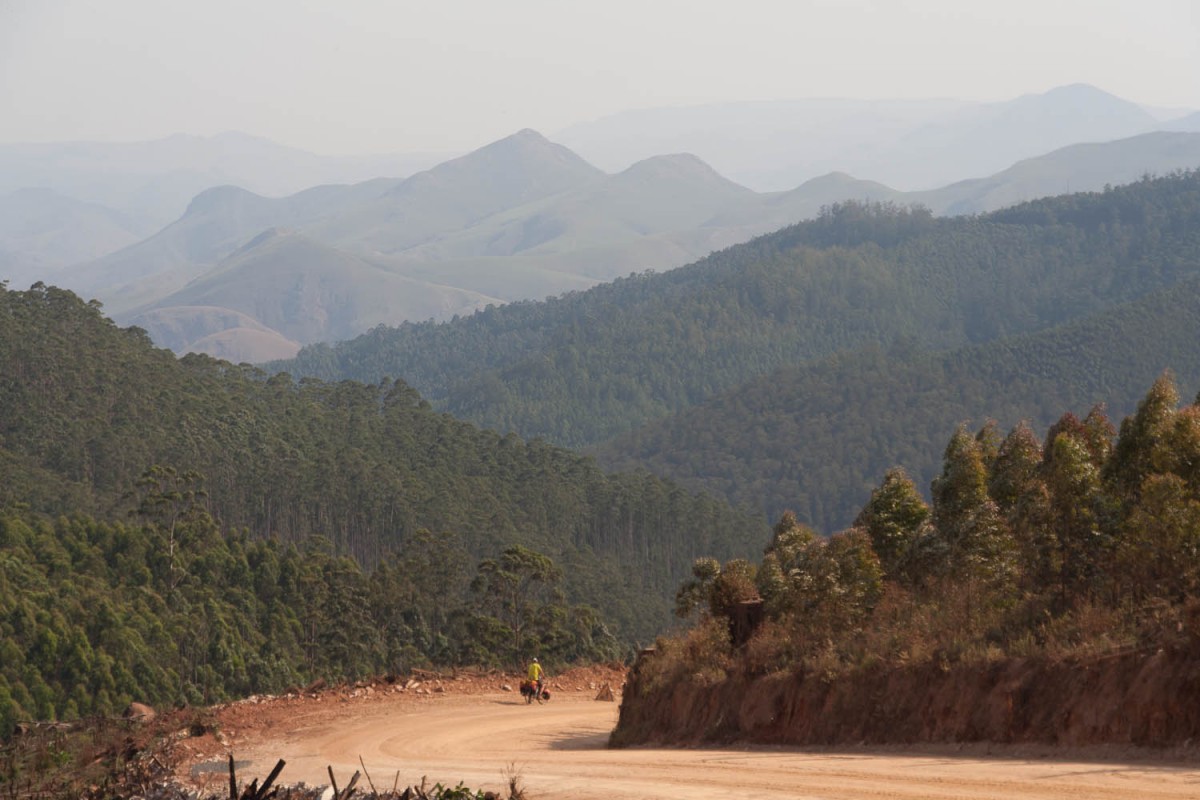
Tehe Piggs Peak to Bulembu road
Food and drinks
Every village will have at least a small shop selling basic foodstuff. We brought some supplies from South Africa. Tap water everywhere is safe to drink.
Climate
We visited Swaziland in October (2013). This is spring on the southern hemisphere. Entering the Ezulwini Valley we experienced a one day heat wave, with temperatures reaching 43 degrees centigrade. Next day the temperature had dropped with 25 degrees to below 20. Leaving Swailand only a fwe days later we had to wear our rain gear because of a cold drizzle and a lot of fog.
Wildlife
Mlilwane Wildlife Sanctuary is located in the Ezulwini Valley. The good news: you are allowed to cycle in the park. We spent a great day in the park, saw all kinds of bucks, and birds. Tip: buy the sketch map at the entrance.
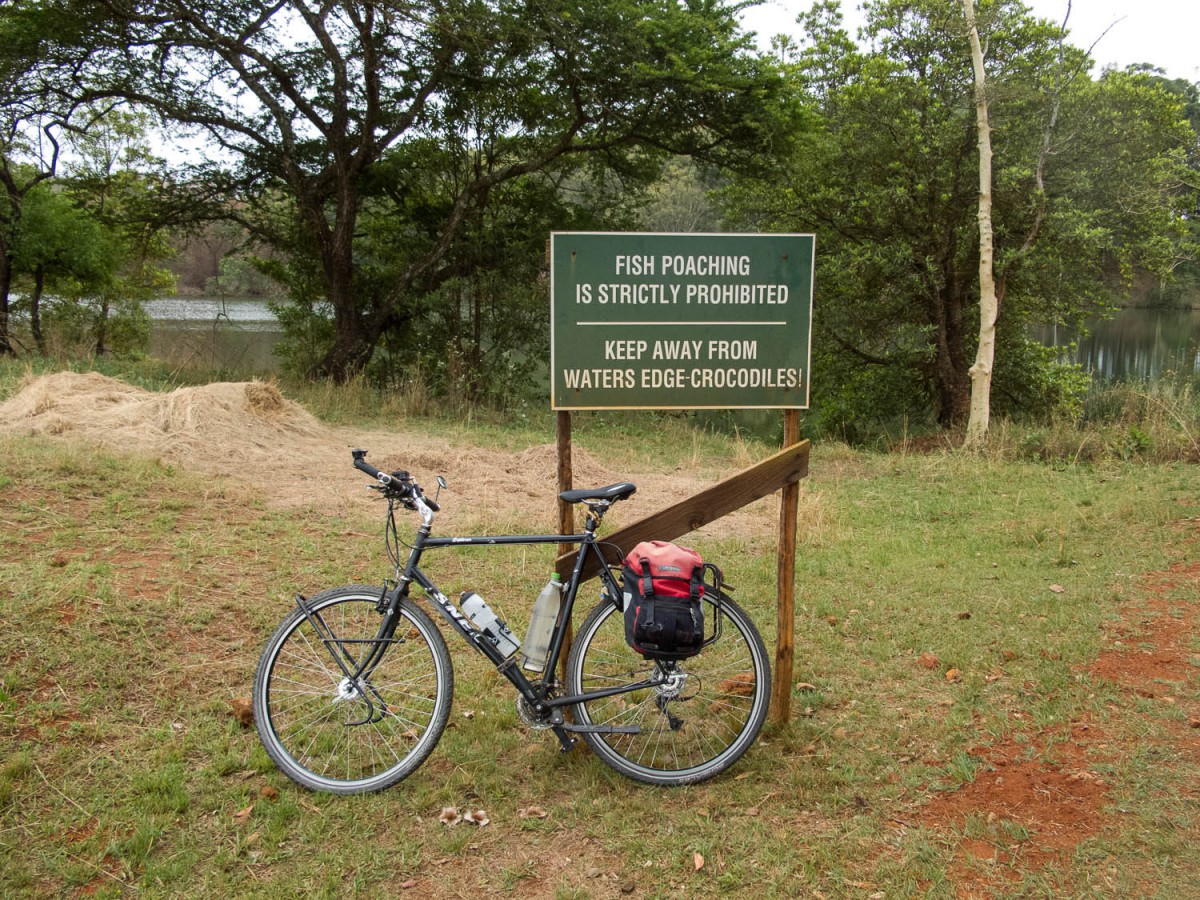
Cycling in Mlilwane Nature Reserve is safe 😉
Where to stay
The first day we arrived at Bhunya in the late afternoon. There was no accommodation available in the village. We asked permission at the police station to put up our tent. A couple of years earlier another cyclist had camped here for a night. We stayed at a lodge in Ezulwini Valley and camped at the Maguga Dam (as the lodge had no vancancies). In Bulembu we were invited to stay with people of the Bulembu community.
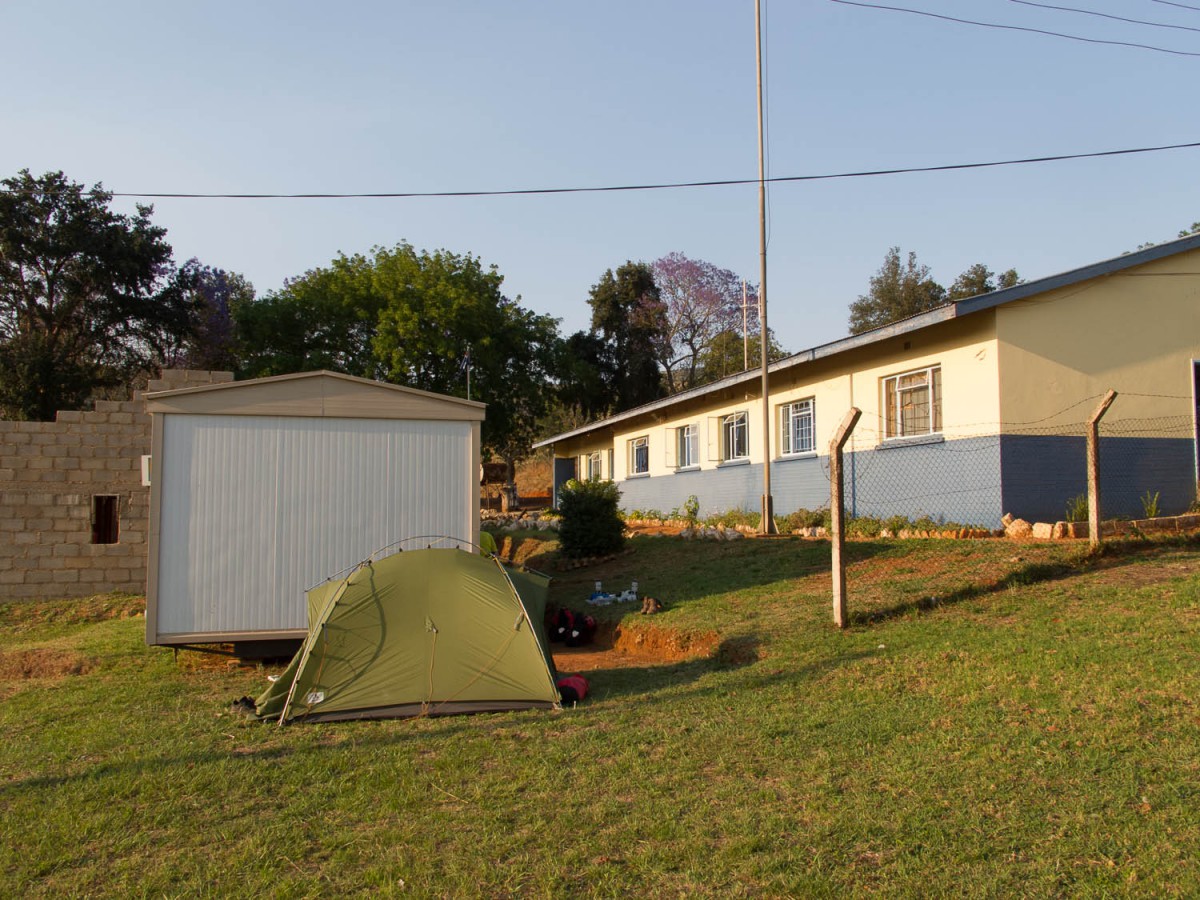
campng at bhunya police station
Communication
Even in the smallest villages all people speak English very well. In Bhunya we had a long conversation in front of our tent with kids aged from 5 to 15. They were all educated bilingual in both English and Swazi and very curious about the world outside Swaziland (“how many wives has your king?”).
Other ways of getting around
Of course cycling is the best way to get around, but Swaziland is quite mountainous, so in the highlands you may want to consider one or more of these alternatives:
Hitch hiking
Trucks and pickups are most likely to give you a ride. We were even offered one without asking on the road from Piggs Peak to Bulembu (but did not need it at that time).
Public Transport
We didn’t see much public transport in Swaziland.
